Choosing the Right Pixie Cut
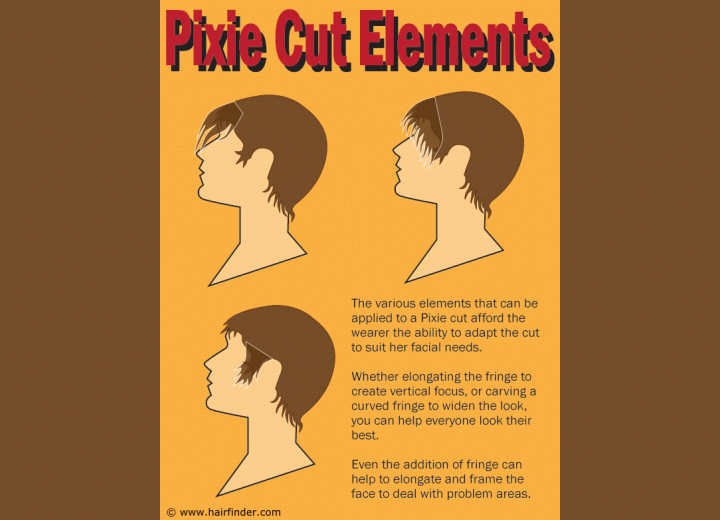
In the pantheon of iconic haircuts, the shortest of them all is the pixie cut. This cut has been adored by carefree and liberated women for decades and has been vilified by those who prefer women to have longer hair. But whether you love it or hate it, the pixie cut is here to stay. Once you accept that, it's time to examine the variations available with the pixie cut.
The pixie cut has a number of variations that enable it to be adapted to different facial needs. The inclusion of bangs, sideburns, and extended nape sections can help to accommodate many of the needs of problem features.
Let's take a look at the different variations of the pixie cut and see what benefits they offer for various face shapes and needs.
Haircut Elements:
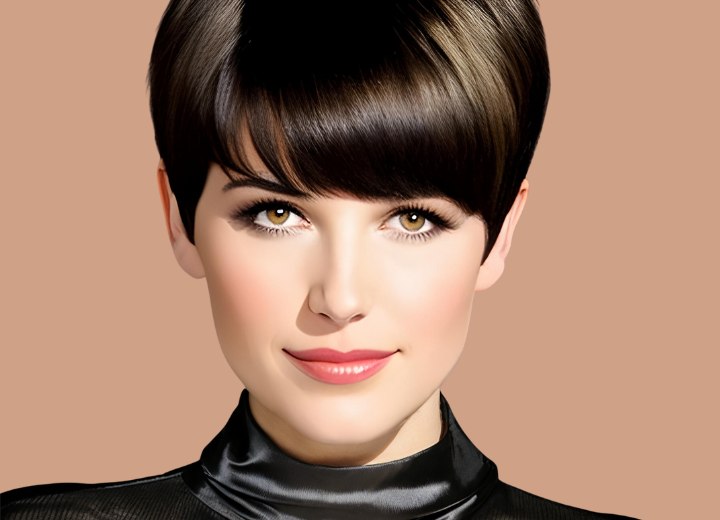
This version of the pixie cut is sometimes referred to as a devil-lock cut. It is often used to help camouflage a high or prominent forehead. It is also useful to detract from prominent features by creating the bangs in an asymmetrical shape (angling it left or right rather than having it centrally balanced).
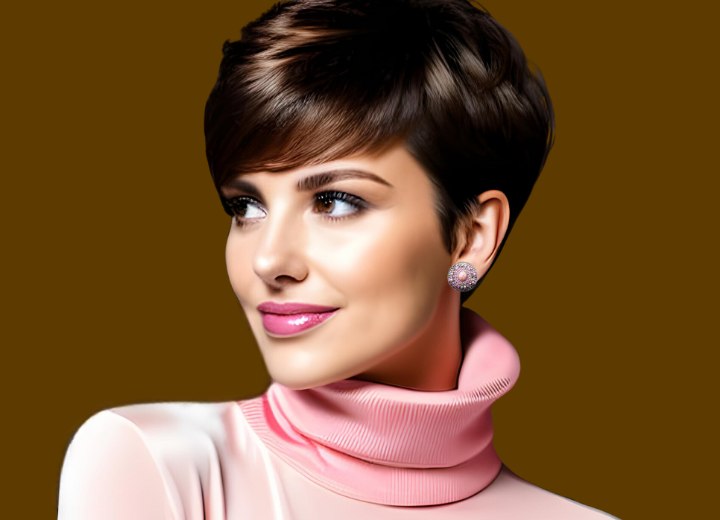
The addition of broader, curved bangs to a pixie cut is helpful when dealing with a face whose features are close-set. The curved line of the bangs helps to frame the features and blot out the space between the features and the hairline. This means that the features appear balanced in the face.
The sides of the bangs area can be extended - deepening the arc - if there is a need to make the face appear longer. If there is a need to create horizontal focus, you can keep the arc shallower for slightly curved bangs.
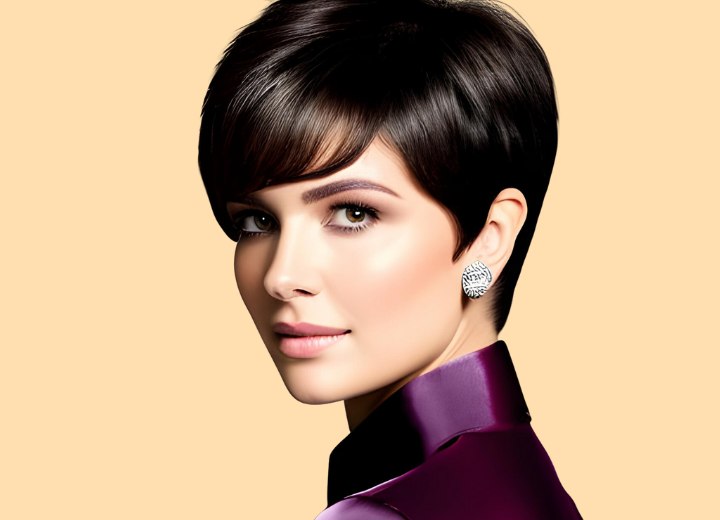
By adding sideburns to a pixie cut, you can also give the style a more vertical focus. This particular variation generally comes in conjunction with other techniques to elongate the face. Thus, it is not uncommon to have a pixie cut that features curved bangs, sideburns, and an elongated nape section. All of these help to elongate the appearance of the silhouette.
Styling Techniques:
Spiky Layers:
Since the pixie cut is already a short, layered haircut, it isn't uncommon for hair texturizing techniques to be applied to give definition and visual interest to the layers. This also enables the hair to be styled for maximum volume and create added height to the overall silhouette.
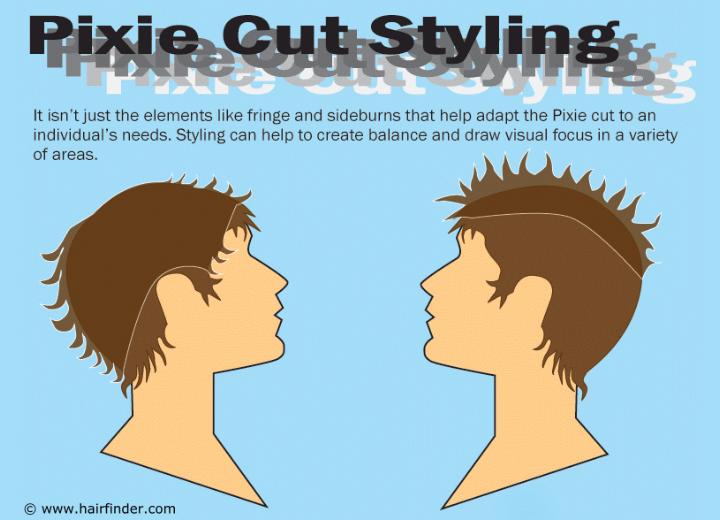
The texturing to create spiky points helps to draw the eye up and outward, and can help to balance both the silhouette and other problematic features as needed. For instance, in a diamond-shaped face, the spiky styling of a pixie cut can help to broaden the forehead area and provide visual distraction.
Smooth Styling:
This may seem like basic styling, and it gives the idea that there is a fairly plain look as the end result. However, sometimes, that's exactly what you need. If the individual's head appears overly large with volumized hair styling, having the hair lie close to the scalp can provide balance. It can also help smaller-framed individuals maintain balance with their overall proportions.
As often as not, the finished style created for an individual isn’t a matter of one element or another being used, but is a combination of two or more of these elements in varying degrees of development. Like elements reinforce one another, and styling techniques can be targeted to benefit specific zones. All together, they help you adapt the style you want into the hairstyle that suits you.
©Hairfinder.com
See also:
Photos of pixies and other short hairstyles
Transitioning to a pixie with a staged approach